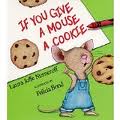Being a writer means cultivating a variety of different contacts. You need to develop relationships with editors, other writers, and depending on what type of writing you do, companies, associations and other venues. The good news is that a writer who keeps these relationships in good repair will have a network of people to turn to for work and advice. The bad news is that all this takes time.
First of all, people can really tell when you are faking it. If you are going to drop an e-mail to a writer buddy to ask a question, don’t think they won’t remember that the last time you e-mailed you wanted something as well. Be genuine. Foster relationships with people you like and it will be a heck of a lot easier to care about what they have been up to in their writing career. Make it easy on yourself.
Editors also know if you are always coming to them with your hand out. Why not drop a line once in a while just to wish them a nice summer or share an article that reminds you of them. Stop thinking of everyone as a gateway to a paycheck and start thinking of them as a person. It matters.
Next. Relationships necessitate regular contact. Continue reading Relationship Maintenance 101


 By Jake Poinier
By Jake Poinier By Jake Poinier
By Jake Poinier